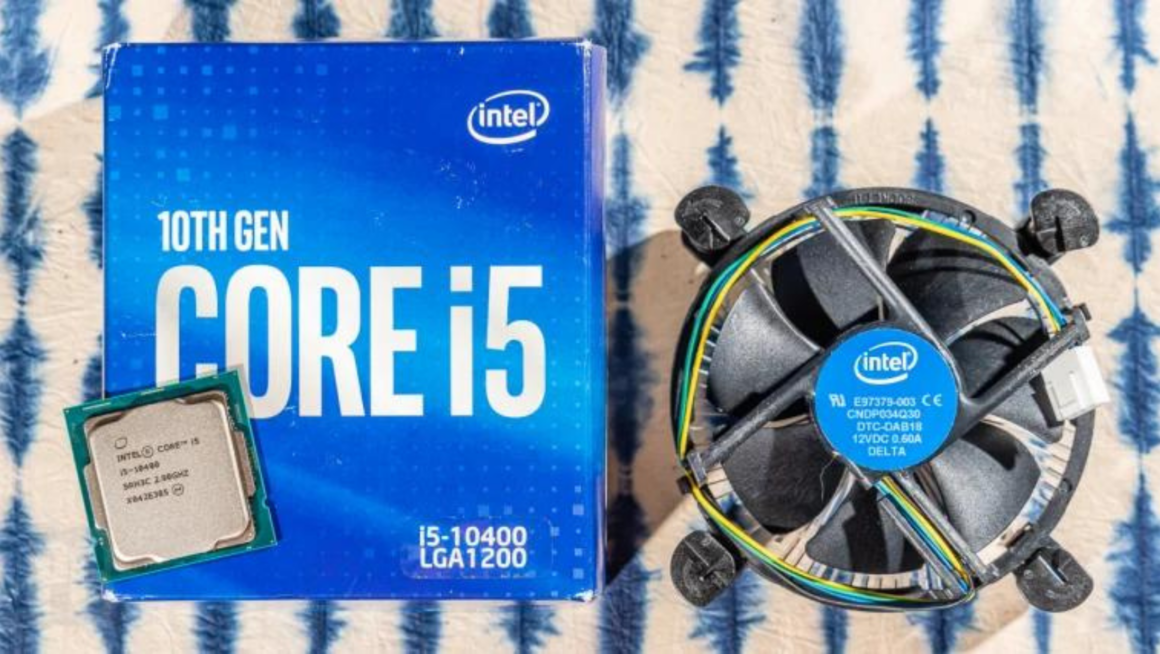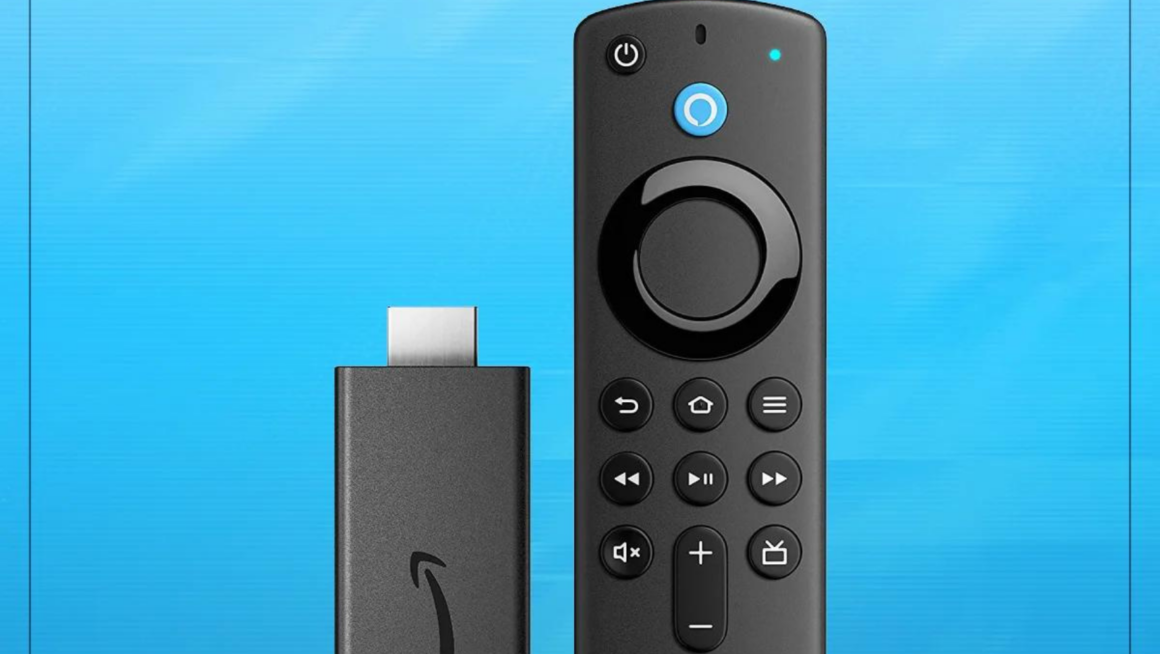Intel’s new 10-core processor has been generating a lot of buzz, but AMD is countering with its own 8-core Ryzen 3. The battle for the next generation of processors will be fierce, but which one wins out?
The i5-10400f vs ryzen 5 3600 is a comparison between two processors. Both are Intel, but one is much more powerful than the other.
AMD Ryzen 3 3300X versus Intel Core i5 10400F
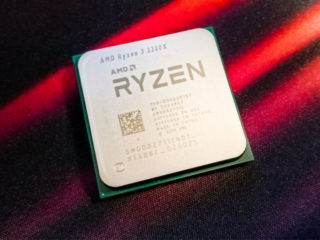 We’re still looking at a smaller model today, the Core i5-10400F against the AMD Ryzen 3 3300X, after the first test of the Core i5-10600K and the top model, the Core i9-10900K, against their respective AMD rivals.
We’re still looking at a smaller model today, the Core i5-10400F against the AMD Ryzen 3 3300X, after the first test of the Core i5-10600K and the top model, the Core i9-10900K, against their respective AMD rivals.
The i5 10400F, being a non-K variant, no longer has an open multiplier and exhibits certain variances in specific situations.
We’ll look at whether it definitely needs to be a K model, as well as the Core i5-pros 10400F’s and drawbacks, on the next pages.
All K-models, as well as certain batches of the Core i5-10400(F), utilize the big 10-core chip, which disables two or four cores as needed, as well as the integrated graphics unit.
STIM (Soldered Thermal Interface Material) is also utilized, as well as a thinner die and a thicker heatspreader in this case.
The smaller 6-core die can be used by both a Core i5-10600 and a Core i5-10500.
The stepping distinguishes the two variations. The 10-core version of Comet Lake-S is used for Q0 stepping.
On the other side, the G1 stepping is based on the 6-core version.
Unfortunately, we had a Core i5-10400F engineering sample (QS) that still used G0 stepping.
As a result, we have no idea which version is being utilized here.
However, the bigger 10-core version with STIM and the thinner Die are most likely due to the name.
But now it’s time for the real test.
Intel Core i5 10400F versus AMD Ryzen 3 3300X results
Intel Core i5 10400F is ranked first.
- Multi-threaded performance is excellent.
- Low use of energy
- Temperatures that are stable
In the i5 10400F versus Ryzen 3 3300X performance battle, the i5 10400F came out on top.
The Core i5-10400F has six cores and active hyperthreading, same as the Core i5-10600KF.
As a result, a total of 12 threads may be handled. The Core i5-10400F has a TDP of 65 W, which is lower than the K versions.
Because the PL2 is 134 W and Tau, the maximum time the PL2 may be on is 28 seconds.
The DDR4-2666 memory interface is defined for the Core i5-10400F. Starting with the Core i7-10700F, Intel exclusively provides the DDR4-2933 interface.
Cinebench R20 is a benchmark.
Cinebench is a well-known program for assessing a processor’s multi- and single-threaded performance.
It still scales well over many dozen cores and, through the single-threaded test, demonstrates a processor’s single-core capability.
In the power consumption test, the Core i5-10400F consumes 77.2 W.
However, this isn’t the maximum figure since the CPU loves to scrape at 100 W for a brief period of time.
If the motherboard adheres to the requirements and does not play any “games,” the constant load drops to nearly precisely 65 W very quickly.
As a result, the system’s overall power usage is minimal.
When compared to the AMD Ryzen 3 3300X, the Core i5-10400F is very cost-effective.
Performance per watt and performance per dollar are two different things.
Benchmarks and power usage metrics are one thing.
However, only by combining some of the most essential critical statistics can a full picture be formed. Processors grow with the number of cores in multi-threaded disciplines like rendering and encoding.
As a result, we looked at the nT power per watt ratio.
In terms of multi-threaded performance per watt, the Core i5-10400F can keep up.
You are the most highly ranked Intel CPU, behind just a few Ryzen processors.
Six cores, twelve threads, and just 77 W are the deciding factors here.
In terms of multi-threaded performance per dollar, the Core i5-10400F is even better.
The price of 175 dollars, of course, is the deciding factor here, and it is just this price that propels the Core i5-10400F to this place.
Latencies in the cache and core, as well as temperature and clock performance
Now we’ll look at the core latencies as well as the behavior of the clock and temperature.
For the Comet Lake S CPUs, Intel utilizes a die design rather than a chipset.
Due to the architecture of the Ryzen CPUs, latencies are always intriguing.
The architecture is very straightforward on contemporary Intel CPUs, and the core-to-core delay technique appears comparable.
The Core i5-10400F achieves comparable latencies as the Core i5-10600K, which is also a six-core but on a bigger chip.
While there are variations of approximately 25 and 70-75 ns for AMD (depending on whether the cores are on the same CCD or not), they are almost similar for Intel, with 45 ns across all cores.
The Ryzen 3 3100 and Ryzen 3 3300X, both having four cores but distinct designs, are an extreme example.
Performance of the clock
What is the performance of the new Comet Lake processors under load? What clock speeds do they have, how much power do they use, and what temperatures do they reach?
We monitor the package power, average clock, and temperature across all cores to answer all of these queries.
We used Blender 2.82 with a demo file for the test and let the rendering run.
The clock, package power, and temperature behavior of the Core i5-10400F is rather dull, since the CPU is always operating at 4 GHz in Blender rendering, uses 77 to 80 W, and never gets warmer than 55 °C.
During the 10-minute rendering, there are no significant changes.
The Core i5-10400F is an excellent all-around processor.
Because hyperthreading is now active, multi-threaded performance improves substantially.
However, owing to the relatively low boost clock rate, the Core i5-10400F can’t quite keep up with the Comet Lake S top versions, but Intel must find a rationale for the bigger models someplace.
It regularly performs well in games, although not on the most powerful CPUs.
The mainboard utilized and the adjustments made there seem to have a significant impact on the power usage.
The Core i5-10400F performs well on our test platform, adhering to the requirements to the letter and allowing no unintended (by Intel and motherboard makers) lapses.
The Core i5-10400F may be totally different depending on the user’s BIOS settings – at least, that’s what our colleagues’ testing indicate.
Overclocking does not allow for large leaps.
As a result, we have omitted a thorough examination of this issue.
At least on a mainboard with a Z490 chipset, the simplest approach is to combine the CPU with faster memory.
However, if you choose a non-K model, you should be aware of this issue and not expect to make large jumps in this area.
Conclusion: The i5 10400F outperforms the Ryzen 3 3300X in terms of performance.
The pricing of the Core i5-10400F is a compelling argument.
It may be purchased for as little as $175, making it extremely cheap.
The Ryzen 3 3300(X) is considerably less expensive, but it only has four cores, therefore we believe the Core i5-10400F to be the most future-proof option.
However, we are unable to provide an official certificate for the socket LGA1200 for future security reasons, despite many indicators that the Rocket Lake CPUs would operate on it.
The Core i5-10400F, when paired with a low-cost motherboard, is a genuine suggestion for those who can live without PCI-Express 4.0 for the time being but still wish to give Intel priority, which is by no means an allegation.
AMD Ryzen 3 3300X is ranked second.
- Multi-core performance is excellent.
- For a little price, you can get mid-range gaming performance.
- Unlocking the Multiplier
- It’s not a big step forward from Ryzen 3 3100.
In the i5 10400F versus Ryzen 3 3300X price-performance ratio battle, the victor is the i5 10400F.
AMD joins the entry-level sector with the Ryzen 3 3300X and Ryzen 3 3100, ten months after the Zen 2 introduction on July 7, 2019.
Previously, Ryzen 3000 with Zen 2 on the desktop was only available with at least six cores, and the lowest option for end consumers was Ryzen 5 3600, which costs $170 on the market.
Although the Ryzen 3000G was still based on Zen+, the first two Ryzen 3s, with four cores and prices ranging from 110 to 130 dollars, target a market that AMD previously serviced solely with APUs in the end consumer sector.
The exam not only includes comprehensive benchmarks, but it also gets to the heart of why AMD made this decision.
In two ways, an eight-core CPU has been halved.
The new Ryzen 3 is built on technology that has been available since July and does not utilize a new die.
As is widely known, the Zen 2 Matisse die is essentially always an eight-core type, which is coupled with an I/O die either single or twice in the desktop.
Each of the two CCX on the same CPU chip generates four cores, including L3 cache.
There are two methods to create a quad-core CPU out of this, and AMD, unexpectedly, utilizes both.
Half of a CCX is deactivated on AMD Ryzen 3 3100.
AMD’s Ryzen 3 3100 processor makes advantage of shared resources.
It combines two cores from the two CCX, each with an 8 MByte L3 cache, while the other two are disabled.
The result is a quad-core CPU with a 16 MByte L3 cache and the drawback of the cores having to communicate with one other through the other CCX, which, as we all know, has a significant impact on latency.
AMD Ryzen 3 3300X: One of two CCX is turned off.
AMD takes a different approach with the Ryzen 3 3300X.
In this case, the manufacturer shuts down a CCX entirely and focuses all efforts on the remaining “core complex.”
This effectively turns it become a “native” quad-core CPU with the fewest data transmission routes.
Significant latency advantages for the 3300X over the 3100
AMD claims that the Ryzen 3 3000’s unique structure may play a role in specific situations, which has been shown in the Techtestreport test, particularly in WinRAR.
This test has previously penalized AMD CPUs with shared resources, and Ryzen 3 3000 doesn’t alter that:
The Ryzen 3 3300X is 67 percent faster than the Ryzen 3 3100 in this test, and it’s the first to demonstrate what theoretical latency measures like SiSoft Sandra and the CoreLatencyTest have shown.
In the Ryzen 3 3100, the latency between one core in CCX0 and another core in CCX1, and so core to core, is above 75 ns, while inside a CCX, the latency is not 30 ns between the individual cores and therefore is always the same in the 3300X.
Except for the L1 cache directly linked to the CPU, AIDA64’s cache and memory benchmark reveals some substantial impacts in nearly all disciplines.
In memory, the throughput rate stays constant, but the latency drops dramatically from 3300X to 3100. The Ryzen 3 3300X outperforms all other Matisse CPUs with 68 ns, demonstrating the benefits of the “native” quad-core variant.
The other observed values are always in favor of the 3300X; a 10% increase in clock speed is insufficient to explain them.
Some titles, such as Kingdom Come and Metro Exodus, benefit from the 3300X’s inclusion, with frametimes or FPS gains of 23 and 24 percent, respectively.
By concentrating on only one CCX, the 3300X not only competes with, but also outperforms, the Ryzen 5 3600 and 3600X, owing to the same clock speed, as long as six cores aren’t an advantage.
This is due to the fact that the tiny six-cores must additionally take resources from two CCXs.
Separate CCXs and chip designs may not always provide benefits.
They may be a disadvantage with tiny CPUs, which are also feasible with monolithic silicon – and not only because of the 125 mm2 (I/O) + 74 mm2 (CCD) die area, which is only utilized for four cores.
However, the subject as a whole should not be given too much weight throughout the course:
The increased 400 MHz clock on the Ryzen 3 3300X gives the majority of the extra power over the 3100, but the alternative configuration adds a few added percentages.
In any case, the big picture trumps the little print: AMD’s technological approach from CCX to CCD to chipset allows for CPUs ranging from $100 to $5,000.
The little reduction in efficiency relative to hypothetical monolithic dies, if theoretically possible at all, is be than compensated for by the cost savings.
Nonetheless, this feature will be a starting point for future AMD CPUs, since there are losses whenever resources are shared or outsourced and then have to work together again later.
Drilling the CCX up to eight cores would be a reasonable next step. There have been rumors in this way for quite some time.
In the model range, classification
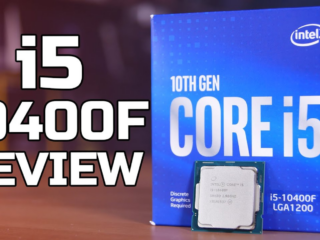 The new CPUs are easy to integrate into AMD’s existing Matisse processor lineup:
The new CPUs are easy to integrate into AMD’s existing Matisse processor lineup:
The Ryzen 3s are the entry-level processors.
The model 3100 has a much reduced clock speed, although it can still support SMT; eight threads are not currently available from Intel on the market.
This could help the Ryzen 3 3300X compete with the Intel Core i5-9400F; a turbo frequency on par with the other Matisse 65 watt CPUs should make you sit up and pay notice.
All turbo modes are implemented in the new CPUs, as AMD had intended for Matisse chips.
The “Precision Boost” feature rates the CPU cores according to different factors, allowing them to surpass the stated maximum clock rate — as occurred in the Techtestreport test system with the Ryzen 3 3300X.
AMD, on the other hand, has given their approval.
After receiving many complaints about not being able to achieve maximum clock speeds at first, the manufacturer has substantially improved the behavior and left space for development.
The initial costs are exorbitant.
On paper, the prices called up seem to be constant, but in the trade, a different language has been spoken for some time.
The Ryzen 3 3300X, in example, seems to be overpriced at 129 dollars, while the Ryzen 5 3600 is readily accessible for 168 dollars, or 39 dollars more.
As a result, the Ryzen 3 must be subjected to the EIA as soon as possible, with sales set to begin on May 21.
Why is this processor being used now?
The new CPUs aren’t being released because AMD is suddenly reinventing itself in this space following the switch from CPUs to APUs in previous years.
Instead, AMD’s two new Ryzen 3 CPUs will be the only ones that can operate on the new B550 mainboards.
Renoir for the desktop is clearly not ready yet, or at least not in significant numbers.
But aren’t there earlier, less expensive six-core CPUs (Ryzen 2000) and quad-core Ryzen 3000G APUs?
You may use them on B550, but not on B550.
While the X570 supports all Ryzen processors save the first generation, AMD has banned all pre-Zen 2 architecture CPUs from the B550.
In addition to the Ryzen 5 3400G and Ryzen 3 3200G APUs, the Ryzen 5 3400G and Ryzen 3 3200G APUs are classified as incompatible.
As a result, there was no low-cost CPU for the B550. The reason behind Ryzen 3 3000’s selection seems to have been addressed.
Only Zen 2 and Zen 3 are supported by B550 boards.
The move is significant, since AMD has traditionally been renowned for its long-lasting CPU sockets and compatible motherboards (vice versa).
If you want to purchase inexpensive B550 boards starting in June, you’ll be severely restricted – and there would be no option at all without the now-released Ryzen 3.
AMD has restored back the BIOS ROM for Ryzen 3000, which was previously too tiny on certain boards, and would rather be prepared for the future than the past:
The B550 chipset will support Renoir on the desktop, as well as the Zen 3 generations Vermeer (as Matisse’s successor) and Cezanne (as Renoir’s replacement).
At the start, there is no room for “old issues,” which would have to be freed up again in 2021.
Previously, new motherboards were supplied with compatibility for older CPUs, however this support was subsequently dropped due to the requirement for more ROM space for newer processors.
Renoir, later Vermeer, and Cezanne, all based on Zen 3, are almost on the doorway.
On request, mainboard manufacturers validate AMD’s specifications.
Although many AMD boards barely handle more than 50 processors, the vendor claims over 200 models for the socket, BIOS memory is always a problem with AMD.
Intel, on the other hand, has motherboards that handle far over 150 different CPUs.
Anyone wanting to utilize earlier CPUs, such as the Athlon 3000, which is less than a year old, will have to use older boards, which is an incredibly uncommon situation thus far.
From the 16th of June, B550 boards will be available.
From mid-June onwards, the B550 boards should be ready for purchase. They’ll support PCIe 4.0 from the CPU and, for example, loop through to the graphics card, but not from the chipset itself, as anticipated.
This chipset is designed to serve as a bridge between the 400 series chipsets and the flagship X570, but it should be able to support motherboards starting around $100 USD – the golden mean.
The new Ryzen 3 processor works on 400-series motherboards.
The Ryzen 3 3100 and 3300X, on the other hand, are compatible with all 400 series motherboards.
The required BIOS upgrades, according to the makers, have been in circulation for many months.
It is not essential to use the most recent AGESA version.
As a result, the test using a B450 mainboard worked flawlessly with both Ryzen 3 and Ryzen 4.
The new test system developed with AMD Ryzen 3000 (Test) in the summer is utilized for all testing.
To guarantee comparison, all important parameters are similar.
As a result, Windows 10 has not yet been updated to version 1909, and the GeForce driver is from July.
Because the latest version of Windows has no effect on AMD’s new CPUs, the company advises using 1903 or 1909.
AMD’s timing is unfortunate: the newest entry-level processors must now be tested on extreme high-end boards, despite the fact that they were designed for B550 boards, which don’t support earlier CPUs.
As a result, direct comparisons are impossible, and the current arrangement remains the best option.
In applications, benchmarks
In contemporary applications, the two newcomers’ four cores and eight threads are more than enough.
As a result, it’s no surprise that the Ryzen 5 2600, which is two years old and in the same price bracket as the two newcomers, is ahead of the two newcomers.
Matisse, on the other hand, may readily replace older Intel CPUs with four cores or prior AMD APU solutions, even if they only have four cores.
In single core tests, the newcomers demonstrate what Zen 2 also implies.
The substantially improved IPC guarantees a favorable outcome, particularly when combined with the Ryzen 3 3300X’s higher clock speed.
The Ryzen 3 3300X is at the top of the rankings since the Turbo clock speed is significantly greater than the tiny Ryzen 5 3600.
In games, benchmarks (Full HD and UHD)
Early 2020 is also important in games: four cores (and eight threads) are the absolute least, a high clock rate is always beneficial, and six cores are sometimes advantageous.
For the Ryzen 3 3300X, the present game mix is (still) paying dividends. More clock speed than the tiny Ryzen 5 3600, with the added benefit of four active cores in a single CCX, puts it just ahead of the competition.
Overall, the package is so excellent that it offers almost identical gaming performance to all other Ryzen 3000s.
However, as is customary, this is a snapshot, since more than four cores (eight threads) are quickly becoming more essential in the gaming environment, and a six-core CPU is obviously the suggestion.
The Ryzen 3 3100, which is smaller, is already having trouble. It goes a little hungry around the clock and is highly prone to have inter-CCX communication issues.
The latency in games is considerably more noticeable than in apps because games respond strongly to delays.
However, it is sufficient to defeat AMD’s chosen opponent, the Intel Core i3-9100F — by a significant margin, depending on the game.
The use of electricity
The Ryzen 3’s origins are visible in idle mode:
A Matisse processor is a Matisse processor, and they’re all very much the same.
The changes become apparent when the system is loaded.
The Ryzen 3 3300X has almost the same electrical performance as the Ryzen 5 due to a comparable high clock rate in the single-core test, but it is shockingly high under full all-core load in Cinebench.
In the test, the Ryzen 5 3600 needs just 6% more power for almost 40% greater performance — the quad-core CPU disappoints here.
The Ryzen 3 3100 is much more efficient.
The studies indicate that even the Ryzen 3, particularly the 3300X, is permitted to exceed the TDP in terms of packaging power.
The same limitations apply here as they did with the prior 65 Watt Matisse CPUs, thus the 74 Watt maximum is perfectly safe.
Temperatures that be unusually high
The Ryzen 3 3300X’s high power consumption is reflected in the temperatures.
78 degrees isn’t essential, but it’s a good number.
The 3600s are in the same situation.
The Ryzen 7 3700X, AMD’s top CPU on the market, is in a much stronger position and even ahead of the Ryzen 3 3100 as a 65 watt efficiency package with eight cores.
This indicates that novices are still using the chips, while the better ones are saved for processors with more horsepower.
The Ryzen 3 may be overclocked as well.
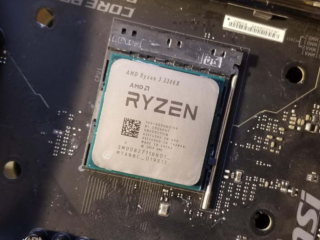 AMD provides a freely adjustable multiplier on even the smallest Matisse CPUs, allowing them to be overclocked in this manner.
AMD provides a freely adjustable multiplier on even the smallest Matisse CPUs, allowing them to be overclocked in this manner.
This is only feasible with Intel’s K-CPUs.
With the tenth generation Core, Intel has removed the K-model from the Core i3, making the cheapest overclockable option a Core i5 for at least 237 dollars.
In exchange, the AMD Ryzen 3 3100 may be overclocked to 4.5 GHz for 109 dollars, and the Ryzen 3300X seems to be able to do the same.
This is a considerable boost, particularly considering that the guaranteed clock rate for the lower device is just 3.6 GHz. During the exam, there was not much time for confirmation of the findings.
At the conclusion of the AMD Ryzen 3 3300X and 3100, there is a split echo.
Both are strong quad-core processors that are still well prepared for the majority of games, but they can only play out a portion of the benefits that Ryzen 3000 with Zen 2 represents.
Both CPUs aren’t very innovative, nor are they particularly efficient, nor is their pricing particularly appealing.
There’s also the problem of a forced switchover, which is required for AMD customers at the basic level since there’s no other option on a B550 mainboard:
The chipset is only compatible with Zen 2 (and Zen 3 in the future), thus Ryzen 5 3400G and Ryzen 3 3200G with Zen+ aren’t an option.
The new Ryzen 3 3000, on the other hand, works on existing motherboards.
The AMD Ryzen 3 3300X at 130 Dollar exemplifies this contradiction.
The CPU will certainly have to contend with the previous six-core AMD Ryzen 5 2600, which costs 115 dollars, and the successor Ryzen 5 3600, which costs just 39 dollars more.
In games and single-core situations, the Ryzen 3 3300X outperforms the Ryzen 5 2600, but it trails by double digits in multi-core workloads.
In games, the Ryzen 3 3300X is similar to the Ryzen 5 3600, but the current six-core CPU is much ahead in multi-core applications.
The results in games, as well as the answer to the issue of how long four cores will not be at a disadvantage compared to six, will have a big impact on the Ryzen 3 3300X’s ultimate score.
When it comes to AAA games, the editors suggest opting for six cores rather than four.
As recently in the Intel-AMD relationship, AMD’s six-core CPUs with the Ryzen 3 3000 are similar to Intel’s single-core CPUs and benchmarks: in single-core applications and benchmarks, AMD is ahead, but in multi-core loads and pricing, AMD is behind.
The AMD Ryzen 3 3100 is a little slower, but for 99 dollars (before taxes) in the United States, it provides a psychological pricing advantage.
The number of opponents has shrunk.
For clients that depend on a discrete GPU anyhow, the 3100 renders all prior desktop APUs useless.
The difference between the 3300X and the 3300 is minor, usually always smaller than the price difference between the two in percentage terms. It also outperforms Intel’s Core i3-9100F, which is much less expensive.
In the future, a B550 mainboard with this Ryzen 3 makes sense.
It is still tough to give a genuine suggestion nowadays.
If you want to utilize current AMD hardware, you won’t be able to avoid an X570 board for a few weeks, since B550 will be released at the end of June. However, the X570 is not designed for the Ryzen 3 pricing range.
The suggestion is still to utilize at least one Ryzen 5 3600, which costs 39 dollars more than the Ryzen 3 3300X but easily delivers up to 40 percent higher performance with 50 percent more threads, making it the obvious future-proof option.
In games, it may also convert a temporary deficit into a long-term advantage.
Even if the cheaper B550 boards become available, one should choose for the bigger CPU, which is less essential owing to the board savings.
A niche for Ryzen 3 3000 that is already useable is the combination with a B450 board, which is already available for $60 and should operate with the CPUs without issue.
Although such a system will not last, when combined with a decent graphics card, it achieves better performance in most games than comparable six-core Ryzen systems.
Even when compared to the Core i3 and Core i5, which are as popular as sliced bread, the Ryzen 3 3100 and Ryzen 3 3300X are currently the much superior option – at least until Intel’s new tenth-generation Core i5 comes, since Comet Lake-S makes the greatest jump in this area.
It will be interesting to see where AMD places the new Renoir-based APUs in the desktop in the coming future.
APUs and tiny CPUs are cannibalized in the Ryzen 1000 generation, which is why AMD abandoned small CPUs in favor of APUs only a few months after their introduction.
The APU, like the Matisse, is built on a smaller die (than the sum of the two required for Matisse) that has all features and a graphic – the B550 boards contain the necessary outputs.
This tale may be told again.
Final Score: AMD Ryzen 3 3300X versus Intel Core i5 10400F
Overall, the Intel Core i5 10400F outperforms the AMD Ryzen 3 3300X in terms of performance and future-proofing.
Overall, the Ryzen 3 3300X is the less expensive option, and it may have a small price-performance edge, but it is not significant.
If you can spare the extra cash, we suggest the Intel i5 10400F processor.
If you can’t get the Intel i5 10400F, the Ryzen 3 3300X is a good alternative, but it’s not as future-proof as the Intel i5 10400F.
AMD is expected to unveil the Ryzen 4000 series towards the end of the year, according to reports. We’ll keep you informed on this.
The i3-10105f vs ryzen 3 3300x is a comparison of the Intel Core i5 10400F and AMD Ryzen 3 3300X. Both processors have different features that make them unique for different tasks.
Frequently Asked Questions
Which is better AMD Ryzen 3 or Core i5?
The Ryzen 3 is better overall.
Is Ryzen 3 3300X better than Intel?
This is a tough question to answer as both processors are very good. The Ryzen 3 3300X has a slightly higher clock speed and more cores than the Intel i3 8100.
Is Ryzen 5 better than i5 10400f?
Ryzen 5 is a better processor than the i5 10400F.
Related Tags
- ryzen 3 3100 vs i5-10400f
- ryzen 3 3300x vs i5-9400f
- ryzen 3 3300x vs i3-10100f
- 10400f vs 3300x reddit
- 9400f vs 10400f

